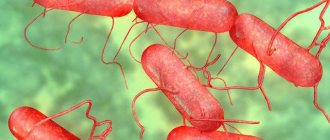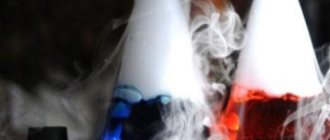Various types of poisoning are common in medical practice. First of all, these are foodborne toxic infections associated with the entry of bacteria and bacterial toxins into the human body. Syndromes of such poisoning:
- dyspeptic (nausea, vomiting, stool changes);
- intoxication (fever, headaches) syndrome.
The most important step in making the correct diagnosis is laboratory tests. What tests are taken in case of poisoning? As a rule, this is a clinical and biochemical analysis of blood, urine, as well as other types of laboratory examination methods.
The nature of food poisoning
According to statistics, only a few seek professional help during intoxication of the body, and treatment is carried out mainly at home. The severity of intoxication primarily depends on the cause. The more pathogenic agents and toxins enter the body, the more intense and longer the intoxication lasts. The most dangerous are poisonings caused by the causative agent of botulism, as well as mushroom poisons
. Some intoxications occur due to unclear etiology. But regardless of the causes, poisoning generally develops with similar symptoms.
Food poisoning in adults occurs mainly according to the following scheme:
- sudden onset of illness;
- mass outbreak (often involving a significant number of victims);
- rapid current;
- short duration (often up to three days);
- favorable outcome (excluding botulism).
By its nature, intoxication of the body is an acute illness
. However, in the case of regular consumption of low-quality food with a low content of toxins, poisoning can also have a chronic course, which is less intense, but at the same time longer.
Symptoms of body intoxication
Symptoms of intoxication in the body depend on the amount of toxin and its nature. Intoxication is accompanied by symptoms of ordinary poisoning at home. Signs of intoxication are accompanied by:
- indigestion;
- susceptibility to fungal infections;
- drowsiness, weakness and lethargy;
- headache;
- weakening of the protective functions of the immune system;
- pain in muscles and joints;
- weight instability;
- nausea and vomiting;
- elevated temperature.
Main symptoms of intoxication
Severe drug toxemia can be accompanied by all of the above symptoms at the same time. If the overall picture of the poisoning does not improve within 1-2 days, the symptoms of intoxication do not go away, then immediate hospitalization and medical help are necessary.
Types of intoxication
mainly two types of food poisoning
:
- Infectious poisoning (bacteria, protozoa, intestinal infections or viruses), which are commonly called foodborne toxic infections.
- Toxic poisoning (poisonous plants, chemical toxins, mushrooms, etc.).
Intoxication occurs as a result of taking low-quality food, sometimes water, which contains dangerous microorganisms, toxins, chemical, animal or plant poisons. For example, dangers include:
- poisonous mushrooms or edible mushrooms, but for some reason they have accumulated harmful substances (for example, collected along roads);
- plants containing poisonous components (wolfberry, unripe nightshade fruits, etc.);
- chemicals (for example, pesticides, various preservatives, dyes, and salts of heavy metals).
A disease of a bacterial nature most often occurs if food contains dangerous microorganisms such as salmonellosis, botulism, listeriosis and a number of others. This type of poisoning can also be caused by staphylococci, E. coli, as well as some types of viruses, for example, rotavirus or enterovirus.
Products that may contain infectious microorganisms include:
- dairy products;
- raw meat and improperly prepared meat dishes;
- fish dishes (especially sushi);
- canned food, especially homemade;
- confectionery products containing cream;
- raw eggs;
- perishable foods that need to be stored in cold conditions;
- products that have expired or are of poor quality packaging;
- catering dishes prepared without complying with sanitary standards.
Causes of toxemia
Toxins include any poisons that harm the body. The most common cause of poisoning is chemicals. Thus, the cause of toxemia can be salts of heavy metals, nitrites, arsenic, etc. Sometimes the poison itself does not cause any symptoms, but a feeling of poisoning can arise from the products of its decay. Not every toxin can poison the body, but much depends on the dose of the substance. Toxemia can occur as a result of infection resulting from injuries, burns and rotting.
Endogenous poisoning occurs in the process of disruption of the production of hormones and active substances or as a result of metabolic disorders, which lead to liver and kidney diseases, as well as sugar toxemia in diabetes.
Main symptoms
The severity of symptoms depends on many factors. For example, the amount of food taken, the type of pathogen or toxin is of great importance
, general condition of the body, age of the victim and other indicators. However, symptoms such as:
- weakness of the body;
- feeling of nausea;
- frequent vomiting;
- diarrhea;
- low temperature;
- pain and spasms in the stomach and intestines;
- poor appetite;
- low pressure;
- cold sweat;
- sometimes signs of dehydration.
If the poisoning is severe, for example, if the infection is caused by botulism or salmonellosis, the following symptoms may join the general signs:
- heavy salivation;
- violation of muscle tone;
- headache;
- visual impairment (for example, double vision);
- loss of consciousness;
- hallucinations and other brain disorders;
- damage to the central nervous system.
Types and forms of intoxication of the body
Based on the origin and nature of intoxication, several types of poisoning are distinguished, accompanied by a certain general clinical picture. The first signs of poisoning manifest themselves differently in each person. This reaction is called a generalized reaction. At this stage, toxins affect systems and organs important to the body, causing certain symptoms. Subsequently, toxins are concentrated in one organ, and most often this is the liver, which performs its direct function: cleanses the body of harmful toxins. Many people think of intoxication as food or drug poisoning, but there are many more types of poisoning. Based on their routes of penetration of toxins into the body, the following are distinguished:
- exogenous poisoning – toxemia of the body from sources penetrating from the external environment;
- endogenous poisoning – toxemia of the body caused by disturbances in internal processes.
Symptoms of acute intoxication
Various factors can become sources of toxemia, therefore, depending on the course of the condition, 3 forms of poisoning are distinguished:
The condition is accompanied by the entry into the body of a large number of toxins of external origin, which require immediate removal from the blood. Intoxication is accompanied by aggravated symptoms in the form of manifestations:
- high temperature;
- muscle pain, joint pain and body aches;
- intestinal disorders and vomiting;
- fainting and coma.
How long does intoxication last?
The duration of the disease depends on the degree of intoxication, as well as the general condition of the body.
. If the victim has chronic diseases or the victim is a child or an elderly person, then even with a small ingress of harmful toxins into the body, the nature of intoxication can be very violent and long-lasting.
Food poisoning can be especially severe in children, pregnant and lactating women, and the elderly. Food intoxication poses a great danger to life for children aged 0 to 5 years. Therefore, if people of these categories are poisoned, you should not self-medicate, but should immediately consult a doctor.
Signs of food poisoning generally develop quite quickly (from two hours to a day) from the moment of eating unsuitable food. In mild cases, intoxication is accompanied by general weakness, infrequent vomiting and short-term stool upset. How much nausea can occur after poisoning again depends on the degree of intoxication. Usually all these unpleasant ailments disappear on their own within two to three days. Body temperature generally remains normal. With the help of vomiting and loose stools, the body cleanses itself of dangerous toxins. After this, you should follow a gentle diet for two weeks to restore the digestive system. Actions to improve intestinal microflora will not be superfluous.
If the poisoning is of moderate severity, then symptoms appear in the first 30-40 minutes after infection and increase over two to three days. At this time, the victim should be given first aid, which will help the body free itself from the effects of toxins. Otherwise, poisoning can cause various complications, such as dehydration.
If poisoning is caused by poisonous mushrooms, botulism agents or other dangerous microorganisms, then the course of intoxication is usually severe. In addition to the classic symptoms, serious life-threatening threats may occur, such as a sharp decrease in blood pressure, a temperature above 39 °C, persistent diarrhea and vomiting, suffocation, paralysis or convulsions, and changes in the quality of urine. In this case, there is a serious danger to life, so it is necessary to quickly transport the patient to the hospital. Before the doctor approaches, it is necessary to provide first aid to the patient.
If the course of the disease is favorable, the cause of which was food contaminated with pathogenic microbes, the poisoning goes away within a week. Moreover, if the liver is in a healthy condition, then recovery occurs without complications.
Why are they needed?
The list of laboratory procedures that are recommended to undergo is not random. Each study allows us to identify certain types of possible infectious agents, of which there are many in urban environments and which are constantly mutating.
The number of potentially dangerous pathogenic bacteria and toxic compounds in any sewer riser of an apartment building is so great that it could easily cause a serious mass epidemic.
The city sewer system, although equipped with purification systems and has gone far ahead compared to the Middle Ages, when terrible diseases were rampant precisely because of standing sewage, is still potentially dangerous, especially on hot, dry days, when fumes from manholes rise into the air, and along with them and some toxic compounds.
Workers in public catering, childcare facilities and other places where employment involves contact with people or products, for example, when working in a supermarket, should be examined especially carefully after poisoning.
Employers need to carefully ensure that an employee who has suffered intoxication undergoes all the necessary examinations, since very often a situation arises in which control is carried out at the level of phrases - “Have you been tested? Passed,” and after that the establishment or institution is closed for quarantine due to mass infection with rotavirus and other similar infections.
Possible factors complicating the course of intoxication
As a result of persistent vomiting or loose stools, there is often a risk of dehydration. The body can lose up to 10% of fluid, which is extremely life-threatening
. To prevent this, it is necessary to maintain a drinking regime during intoxication. You need to be especially attentive to young children who have not yet learned to speak. The baby does not yet know how to ask for a drink, therefore, if the victim is a small child, it is necessary to provide him with the necessary volume of liquid. You need to drink water often and in small portions.
The degree of intoxication can be determined by observing the symptoms. In the acute course of the disease, stool upset and frequent vomiting occur abruptly and subside in a short time. If ailments occur 6 or more hours after a meal, and acute symptoms (vomiting, diarrhea, etc.) begin to intensify within a few hours, then, most likely, intoxication will be severe and long-lasting. Treatment may take up to 10-14 days, and recovery will take another two to three weeks.
.
If the poisoning is severe, then treatment is best carried out thoroughly and in a hospital setting. In this case, serious violations of vital organs are observed, so only a doctor can correctly diagnose and decide on treatment methods.
In what cases does blood poisoning occur?
Poisons include various substances that can have a harmful effect on the body. The main causes of poisoning from the external environment are:
- exceeding the required dosage of medications;
- drug overdose;
- exposure to substances used to kill parasites;
- ingestion of missing food;
- if bitten by an insect or animal that is classified as poisonous;
- excessive consumption of alcoholic beverages;
- poisoning through blood. If a person has received a transfusion of contaminated blood;
- failure to comply with safety precautions in production involving heavy metals;
- decision to commit suicide by poison;
- improper use (or use by children) of household chemicals;
- non-compliance with the rules during medical procedures and surgical interventions;
- burns of the skin caused by chemicals.
The causes of internal formation of blood poisoning are:
- malignant tumors;
- tuberculosis;
- release of hormones during pregnancy;
- malfunction of the thyroid gland;
- poor immunity;
- diabetes;
- disturbances in metabolic processes.
Main stages of treatment
In case of poisoning caused by poor-quality food, you must:
- perform gastric lavage;
- ensure the intake of enterosorbents
(for example, activated carbon, enterosgel, polysorb); - maintain a drinking regime;
- provide peace;
- on the first day, refuse food.
In the future, it is necessary to restore the functioning of the gastrointestinal tract. To do this, you need to introduce a special diet, temporarily giving up fried, spicy and heavy foods.
. You should also exclude dairy products, fatty meats and fish, sweets, and alcohol. You should consult your doctor and include probiotics. These drugs perfectly help restore the balance of the gastrointestinal tract.
Possible consequences and prevention
If a patient is poisoned, some negative consequences for the body can be expected:
- Pneumonia.
- Gastritis.
- Kidney failure.
- Heart diseases.
- Constant headaches.
- Hepatitis.
- Peptic ulcer of the stomach.
- Hormonal disbalance.
To avoid blood poisoning, you need to remember and adhere to some simple rules:
- store toxic drugs out of the reach of children;
- When working with chemicals, follow safety rules, use protective clothing, a mask, and gloves;
- if an illness occurs, try not to treat yourself, but consult a doctor;
- regular personal hygiene;
- frequent wet cleaning;
- monitor product quality and expiration date;
- do not abuse alcoholic beverages.
Many people have been poisoned for some reason in their lives. Most people help themselves without resorting to the help of specialists. They consider it unnecessary to take tests. This approach is wrong; it is not always possible to cope with such a situation. Timely tests in case of poisoning will help to quickly and accurately make a diagnosis and begin treatment in a timely manner, avoiding complications.
Prevention of poisoning
To protect yourself and your loved ones, you need to eat only fresh food that has been stored in the right conditions.
. Meat and fish must be prepared in accordance with cooking technology. Particular care should be taken when eating dishes that contain raw foods, such as sushi. If possible, consume perishable foods immediately. You should not prepare dishes from unfamiliar mushrooms, or eat homemade canned food. The food preparation process must be carried out in a hygienic manner.
Toxicology screening
- this is chromatography; it allows, after the simplest extraction, to quickly qualitatively evaluate a sample for the presence of frequently occurring elements. Screening methods are divided into 3 categories. One of them, used more often than others, is the study of an extract from 20 ml of urine. It applies to drugs in the various groups listed below.
Urine screening tests for toxic substances
Methods: thin layer chromatography, gas chromatography, mass spectroscopy. — Material: urine (at least 20 ml if possible).
Determined drugs: sedatives; tricyclic antidepressants; benzodiazes; analgesics (except acetaminophen); phencyclidine hydrochloride; amphetamines.
It should be noted that usually not each drug is assessed, but a whole class, so if the doctor suspects poisoning with a certain drug, he must inform the laboratory, which will allow the use of specific methods that are not used in conventional screening.
The presence of heavy metals in the urine is detected by another series of tests.
Urine screening tests for heavy metals
Methods: color reactions with special reagents. — Material: urine (at least 50 ml if possible).
Determined metals: antimony; bismuth; mercury; thallium (on special request); lead (on special request).
Type 3 screening tests generally require serum.
Screening tests with serum for volatile substances
Methods: gas chromatography - Material: clotted blood
Determined substances: ethanol; isopropanol; acetone.
These tests detect alcohols and their derivatives
. The most commonly used tests are ethanol, isopropyl alcohol, methanol and acetone. Tests for other alcohols can easily be added to the standard tests.
All chromatographic screening analysis methods
are based on a comparison of the mobility of an unknown substance and known ones. This method allows preliminary identification of the drug, but additional research is usually required to definitively identify the toxin.
Many compounds are quantifiable
. Each laboratory is asked to provide a list of the substances being tested. The most commonly detected serum concentrations are salicylates, acetaminophen, iron, barbiturates, anticonvulsants, lidocaine, theofplin, alcohols, and lead. More specific quantitative analyzes are often not included in the first set of studies.
It is very important to choose the right material
for toxicological analysis. Typically 3 substrates are sent to the laboratory. Gastric contents obtained after vomiting or lavage are sent for analysis as a whole. The laboratory sometimes examines particles of a substance or a homogenate of the entire material. Urine without preservatives is sent to the laboratory in quantities of 50 ml or more. However, if the amount of urine is limited, send as much as can be collected.
The most informative study of clotted blood
, the minimum sample amount is 10-20 ml. To determine carboxyhemoglobin, anticoagulants are added to the blood. If the blood is sent to a distant laboratory and more than a day passes before the material is delivered there, the serum is separated from the cellular elements. Each sample is accompanied by basic information - the patient’s name, age, profession, a list of symptoms and the time of their onset.
List all suspected or suspected toxins
, and any information clarifying the suspected toxic compound is reported. Enter information about previous symptoms, chronic diseases and administered medications.
Drug identification
is of fundamental importance for the treatment of poisoning by certain substances. The content of drugs in plasma in the early stages of the disease makes it possible to predict the development of events and thus helps to outline the range of necessary therapeutic measures.
For example, acetaminophen
and methanol have low toxicity, but their metabolism produces highly toxic products. The plasma concentration of the parent compound allows one to determine the amount of toxic metabolite formed and thus develop indications for treatment. Salicylates, iron and lead are toxic substances, in case of poisoning with which clinical symptoms appear after one time or another.
In each of the above cases, the concentration
the drug in the serum will help predict the development of events and give direction to therapeutic measures.
In toxicology laboratories
Only a few routine tests are performed. It is advisable to contact a toxicologist by telephone and report suspected poisoning in order to concentrate the laboratory’s efforts and achieve cooperation in determining the range of possible toxins in a given patient.
Various types of poisoning are common in medical practice. First of all, these are foodborne toxic infections associated with the entry of bacteria and bacterial toxins into the human body. Syndromes of such poisoning:
- dyspeptic (nausea, vomiting, stool changes);
- intoxication (, headaches) syndrome.
The most important step in making the correct diagnosis is laboratory tests. What tests are taken in case of poisoning? As a rule, this is a clinical and biochemical analysis of blood, urine, as well as other types of laboratory examination methods.
Features of chemical-toxicological analysis
Chemical toxicological analysis (CTA) is a list of methods used for the isolation and detection of toxic compounds and the products of their metabolism in tissues and biological fluids. The purpose of CTA is to help toxicologists assist in the diagnosis of acute poisonings, and toxicological control during the treatment process.
The following techniques have become widespread: gas chromatography, thin layer chromatography and spectrophotometry.
The material for the study is:
- blood;
- cerebrospinal fluid;
- urine;
- vomit;
- gastric lavage water;
- plant objects associated with poisoning, and other material evidence.
Detection of methemoglobin or acetone in the blood can be a marker of intoxication and certain diseases.
Testing for mercury poisoning is carried out by adding 30 ml of hydrochloric acid to 30 g of gastric contents. A copper plate (wire) is lowered into the material being tested. The mixture is heated in a water bath, stirring occasionally. If the material contains mercury, the plate (wire) becomes covered with a grayish coating. To control, it is washed with water, then with alcohol and ether, and dried. Then they are placed in a tube, which is tightly sealed at one end. 1 cm from the top of the wire, wrap the tube with a thin strip of wet cotton wool. As a result of heating, a gray coating forms in the form of a ring on the wall of the tube. After adding the iodine crystal and reheating, the strip turns pink-orange.
In case of intoxication of unknown etiology, CTA is carried out in several stages:
- Isolation of a toxic compound from a biomaterial.
- Carrying out qualitative reactions using instrumental and chemical methods to determine the origin of poisoning.
- Quantitative characteristics of the poisoning agent.
First, the collected urine is analyzed after urination. For this purpose, general chromatographic screening is done. Then some partial chemical reactions (for salicylates, for phenothiazines).
In the case of food (intestinal infections), biomaterial is taken from a child and an adult for ELISA or PCR. Thanks to them, laboratory workers can analyze enzyme properties and identify the causative agent of the disease.
Causes of poisoning
The answer to the question of what tests need to be taken in case of poisoning depends on its cause. It is logical to distinguish three groups of possible reasons:
- associated with the entry into the stomach and intestines of bacterial toxins and microorganisms themselves. In this case, significant local changes occur in the intestine associated with damage to the epithelium, and weak systemic signs. In patients, dyspeptic syndrome predominates in the form of nausea, vomiting, loose stools and pain in the epigastric or periumbilical region. Intoxication phenomena are often observed - an increase in body temperature to 38-38.5 o C, headaches, and general weakness.
- and their salts, which can also happen when consuming foods, mushrooms, berries and other foods with a high content of these substances. Heavy metals have a damaging effect on intestinal, kidney and liver cells, leading to characteristic biochemical and clinical changes described below.
- In case of poisoning with chemicals, solvents (white spirit,) there is a predominant damage to the central nervous system, hematopoietic system, as well as the kidneys and liver.
Depending on the suspected causes, the doctor will decide what tests need to be done in case of poisoning.
Blood indicator
First, the attending doctor, to whom the patient has approached with a diagnosis of intoxication, will send the person to take a regular blood test, which (as a general rule) is taken on an empty stomach. A nutritious breakfast, even unsweetened, provokes an increase in sugar. Therefore, after resting, the patient goes to the clinic in the morning.
Donating blood reveals individual data. Eg:
- Red blood cells are blood cells and store hemoglobin inside. Indicators for females and males differ. But they should not exceed 5. An increase in this indicator in humans occurs due to many diseases of the respiratory, urinary and other body systems. A deficiency occurs when there is significant blood loss.
- White blood cells are produced by the bone marrow. Their values should not exceed 9. An increase in parameters is associated with the presence of inflammation.
- Platelets clot blood. A reading of up to 321 is considered normal. Indicators above normal indicate the likelihood of cirrhosis or serious tuberculosis.
- Hemoglobin is contained in red blood cells as a pigment and transports oxygen from the lungs. Normal hemoglobin levels are 130-160g/l for men and 120-140g/l for women. An increase in hemoglobin can occur with heart failure.
The test also shows glucose, protein, bilirubin and creatine. Exceeding the norm of the listed indicators indicates the need for timely treatment.
Many people have been poisoned for some reason in their lives. Most people help themselves without resorting to the help of specialists. They consider it unnecessary to take tests. This approach is wrong; it is not always possible to cope with such a situation. Timely tests in case of poisoning will help to quickly and accurately make a diagnosis and begin treatment in a timely manner, avoiding complications.
General blood analysis
A patient admitted to the hospital undergoes a series of blood tests, which includes a clinical or general blood test, as well as a biochemical study. In a clinical blood test during food toxic infection, an increase in the number of leukocytes and an acceleration of the erythrocyte sedimentation rate are noted, which is associated with the development of an inflammatory process in the patient’s body. At the same time, changes may not be traceable, which is also important to take into account. Blood tests for heavy metal poisoning are usually uninformative and nonspecific.
In case of chronic solvent poisoning, the development of anemia (decrease in the number of red blood cells and hemoglobin in the blood) with simultaneous leukocytosis (increase in the number of white blood cells) is noted, which reflects the specific effect of such substances on the red bone marrow. What tests should be taken in case of poisoning: a general or clinical blood test? The differences between them are minimal, and in each specific case the decision is made by the attending physician.
What blood indicators are dangerous?
A further decrease in blood counts from normal after the start of treatment is considered dangerous. This suggests that the treatment tactics were chosen incorrectly.
Blood indicators in case of poisoning, which are considered an unfavorable sign:
- decrease in the content of red blood cells below the minimum acceptable limit;
- drop in hemoglobin level. Indicators below 60 g/l are dangerous;
- an increase in the number of leukocytes more than 12*10 9 /l or less than 4*10 9 /l;
- increase in ESR more than 15 mm/h.
Bacteriological research
What tests do you take in case of poisoning to determine the causative agent? Typically, two approaches can be used for this purpose:
- Sowing the patient's stool onto nutrient media to identify the predominant microorganism that is potentially the causative agent of infection. However, this method is low specific and may identify the wrong bacterium that caused the poisoning.
- Inoculation of gastric lavage water obtained during first aid on nutrient media. It is a much more accurate way to identify the pathogen. Such studies are carried out in special microbiological laboratories.
In this regard, it is advisable to store gastric lavage water in a closed container if first aid was provided before the arrival of emergency medical services or going to the hospital. Their bacteriological culture will allow us to identify the pathogen and select the optimal treatment.
Types of analyzes
When you contact a clinic after poisoning, where such situations are studied, you will need to take all the necessary tests. Thanks to this, the patient’s diagnosis is established correctly. A timely examination allows you to find out the date of intoxication of the body and draw up a recovery plan. Standard types of tests taken:
- General urine analysis;
- Blood chemistry;
- Bacteriological research.
A routine blood test is taken. The test shows hemoglobin level and erythrocyte sedimentation rate. The resulting standards show inflammation in the human body. If the infection is chronic, they talk about the development of anemia.
The ring finger is suitable for taking a blood test. It is treated with an antiseptic wipe, pierced with a special device, and the biomaterial is removed.
General urine analysis
A urine test for glucose, urobilin and protein indicates the overall condition of the kidneys. This analysis determines acute or chronic liver failure. Nephropathy occurs when poisoned by toxic substances. Healthy kidneys help stop and neutralize intoxication in the body and allow you to take the right treatment strategy. A mandatory sign takes into account the appearance of urine: color, volume and concentration.
Blood biochemistry
Blood tests for poisoning are different and differ in the number of markers studied. And there are more than a hundred of them. Check for the presence of fibrinogen and C-reactive protein. These data determine inflammation in the body of a patient suffering from poisoning. It is extremely important to determine these types of markers in case of food intoxication.
To detect liver failure, blood is tested for alanine aminotransferases and bilirubin. The liver suffers immediately as soon as it is poisoned by solvents and heavy metals. Additionally, the presence of glucose is checked, especially if the patient has diabetes.
The functioning of the urinary tract is studied by studying creatine in blood plasma. Under normal conditions, the protein is quickly rejected and excreted from the body by the kidneys. An increased concentration will indicate problems in the filtration apparatus.
Bacteriological research
This type of study pinpoints the cause of the toxic infection. The test detects the disease and identifies disease-causing (pathogenic) microorganisms in the body of the poisoned patient.
Identifying the causes of poisoning is carried out in several ways. Bacterial culture of stool on nutrient media reveals the suspected causative agent of infection. But I can’t tell for sure. This is a disadvantage of the mentioned approach. Checking for differential surface of gastric waters. Rinse water is obtained during first aid. This type of procedure is more accurate and is carried out exclusively in a special treatment center in a microbiological room.
Blood chemistry
What tests should you take if you are poisoned? The most important step in making an accurate diagnosis is conducting a biochemical blood test. At the same time, the list of detected substances (tests for several hundred blood components are possible) may differ depending on the cause of the poisoning itself.
Measuring the amount of fibrinogen and C-reactive protein makes it possible to assess the presence and intensity of the inflammatory process in the victim’s body, which is especially important for foodborne infections.
Studying the content of liver enzymes (ALAT - alanine aminotransferase; AST - aspartate aminotransferase), as well as bilirubin (total, direct, indirect) allows you to obtain objective information about the condition of the liver. The work of the latter is disrupted by poisoning with heavy metal salts and various solvents. In addition, it is important to study the amount of glucose in the blood, especially if the patient has diabetes.
The function of the urinary system is assessed by studying the concentrations of urea and creatine in the blood plasma, which are normally actively excreted from the body through the kidneys. The correct prescription of biochemical tests allows you to quickly clarify the degree of damage to vital organs and choose the optimal treatment tactics.
General urine analysis
A urine test to determine the level of density, glucose, urobilin, and protein content allows you to assess the condition of the kidneys and their ability to remove toxins. The latter fact is especially important when conducting detoxification therapy through the use of intravenous infusion of special medicinal solutions, such as Hemodez, Disol.
Read how to distinguish an infection from food poisoning. How to provide assistance to victims.
Find out why the body ache when poisoned. Reasons and assistance.
Other tests for poisoning
In addition to these studies, which are widely used in practice, it is possible to conduct narrowly focused studies. For example, the use of a lumbar puncture followed by examination of the cerebrospinal fluid is indicated when serious central nervous system damage is suspected.
The use of enzyme-linked immunosorbent assay or PCR studies makes it possible to identify the causative agents of poisoning even in severe cases when it is not possible to examine stool or gastric lavage.
It is important to note that the interpretation of the data obtained should be carried out only by the attending physician who is competent in the field of disease diagnosis. Correct diagnosis allows you to exclude additional useless examination methods and prescribe optimal, rational treatment for a particular patient.
This approach prevents the progression of symptoms and significantly reduces the risk of complications. What tests should you take if you are poisoned? It is best to contact your doctor, who will examine you, deciding what exactly is necessary to clarify the diagnosis.
Food poisoning is not a disease, but is characterized as a condition in which intoxication of the body occurs due to the ingestion of poor-quality products into the intestines. In such products, usually, the process of multiplication of various microorganisms and the accumulation of toxins released by them has already occurred. Therefore, when entering the body through the food tract, such products poison it and cause symptoms of intoxication.
Any food poisoning can be divided into two groups: food toxic infections (when microorganisms with toxic effects enter the body), and food intoxication (when microbial toxins enter the body).
- The first group of food poisoning is intestinal infections, which have a similar clinical picture and their outcome is most often favorable. Toxic infections are caused by enterococci, streptococci, staphylococci, proteus, campylobacter, salmonella, and clostridia.
- The second group of food poisoning is most often caused by Staphylococcus aureus, the toxins of which accumulate in food, or botulinum toxin, which is produced by Clostridium botulinum.
Food poisoning can be caused by consuming poorly prepared food, or if food was stored in conditions of non-compliance with the terms and conditions of storage, in conditions favorable for the reproduction and development of microorganisms that can cause poisoning of the body. Such conditions are created when people do not comply with personal hygiene rules, when sanitary norms and rules are violated during the procurement, transportation, storage and preparation of food.
Special studies
They also conduct special studies that are actively used in modern medical practice. They are considered complementary and have a narrow focus. A lumbar puncture is performed to check the cerebrospinal fluid. The procedure is carried out if dangerous damage to the cells of the central nervous system is suspected.
When an enzyme immunoassay is performed, the cause of intoxication is determined even in the most advanced cases, if it is impossible to study the composition of stool or rinse the stomach with water.
The interpretation of the studied tests should be carried out by a doctor who is directly involved in the treatment of a patient with poisoning. He understands such ailments and will select the most rational approach to treating the patient.
The right attending physician will help stop the development of intoxication in a timely manner, as he will offer to take the necessary health tests.
Symptoms
Food poisoning can appear within a few hours after eating low-quality food, but no later than a day later. There is a characteristic feature of food poisoning: symptoms can appear immediately in all people who consumed the same low-quality food products at the same time.
Poisoning begins with a feeling of discomfort in the intestinal area, rumbling and spasms. Then pain may appear, which is localized in the navel or in the pit of the abdomen. The patient may experience nausea and repeated vomiting, diarrhea, or loose, foul-smelling stools. Mucus or blood may appear in the stool during food poisoning, but these are extremely rare symptoms.
General symptoms of food poisoning include: a general state of weakness, dizziness, and sometimes fainting, headaches, and rapid heartbeat.
In more acute cases of poisoning, the body temperature may rise, the skin takes on a pale tint, and the tongue becomes dry as the body loses a lot of fluid.
The symptoms of food poisoning last no more than three days, but there may still be general malaise and discomfort in the intestines, which are caused by dysbiosis (an imbalance in the composition of the microflora in the large intestine).
Botulinum toxin food poisoning is usually considered separately from other forms of this condition, since it is one of the most powerful toxins in nature. If poisoned, it can cause paralysis of a person's muscles.
Signs and symptoms
Blood poisoning is a rather vague concept, implying the entry of toxins into the internal environment of the body and including the development of acute or chronic symptoms. In medical practice, it is considered as bacteremia (the entry of microorganisms into the general bloodstream) or sepsis - a systemic inflammatory reaction syndrome caused by the activity of dangerous microflora.
Symptoms of food poisoning vary in severity and combination. These may include the following:
- Abdominal pain: most severe during inflammatory processes; painful muscle cramps in the abdomen, mainly due to loss of electrolytes
- Vomiting: A significant symptom in infections with Staphylococcus aureus, B. Echinocereus and Norovirus.
- Diarrhea: usually lasts less than 2 weeks
- Headache
- Fever: may be associated with invasive disease or infection outside the gastrointestinal tract
- Changes in feces. Bloody or slimy stools when the pathogen affects the mucous membrane of the small or large intestine; copious rice-watery feces in cholera
- Reactive arthritis: Salmonella, Shigella, Compylobacter and Yersinia infections
- Bloating: May be associated with giardiasis.
More serious cases of food poisoning can lead to life-threatening neurological, hepatic and renal syndromes leading to permanent disability or death.
Diagnostics
To diagnose food poisoning, the doctor collects a detailed medical history. When interviewing the patient, the causes of poisoning are established. The patient's body temperature, blood pressure, and pulse must be measured. The doctor also conducts a general examination of the patient, looking for the presence of allergic reactions, and palpation of the abdominal area, which reveals pain in the periumbilical and epigastric areas.
Then laboratory tests of stool are carried out to identify microorganisms that caused poisoning or intoxication of the body.
A general blood test (in case of poisoning, the blood will be thickened) and a biochemical analysis are required.
Recently, instrumental diagnostic methods for food poisoning have become widely used: fibroesophagogastroduodenoscopy (shows the condition of the mucosa in the upper parts of the digestive tract), colonoscopy (shows changes in the mucous membrane of the large intestine), sigmoidoscopy (assesses the rectal mucosa). In cases of acute food poisoning, fluoroscopy is performed.
In case of general mass food poisoning, the sanitary and epidemiological service conducts research on the products that caused mass intoxication.
What tests need to be taken
After contacting a specialized medical institution, it is necessary to submit urine, other fluids and tissues for tests that will help in making the correct diagnosis. Submission of biomaterials for research allows us to judge the dynamics of the process. Timely examination influences treatment tactics. It allows you to establish the exact cause of intoxication and select the right treatment, which prevents you from wasting precious time. The following studies are usually carried out:
- general blood analysis;
- bacteriological examination;
- biochemical blood test;
- general urine analysis.
A general blood test in case of poisoning allows one to judge the ratio of blood cells, hemoglobin content, the ratio of cellular elements to plasma (hematocrit), and erythrocyte sedimentation rate. Thanks to this, it is possible to judge the presence of an inflammatory or infectious process. In this case, a shift in the leukocyte formula to the left is characteristic - the appearance in the blood of a large number of young (immature) forms of leukocytes, leukocytosis (increased content of leukocytes), acceleration of ESR. For chronic intoxication, anemia is likely to develop. This is judged by the hemoglobin content. The lower limit of this indicator is 120 g/l.










